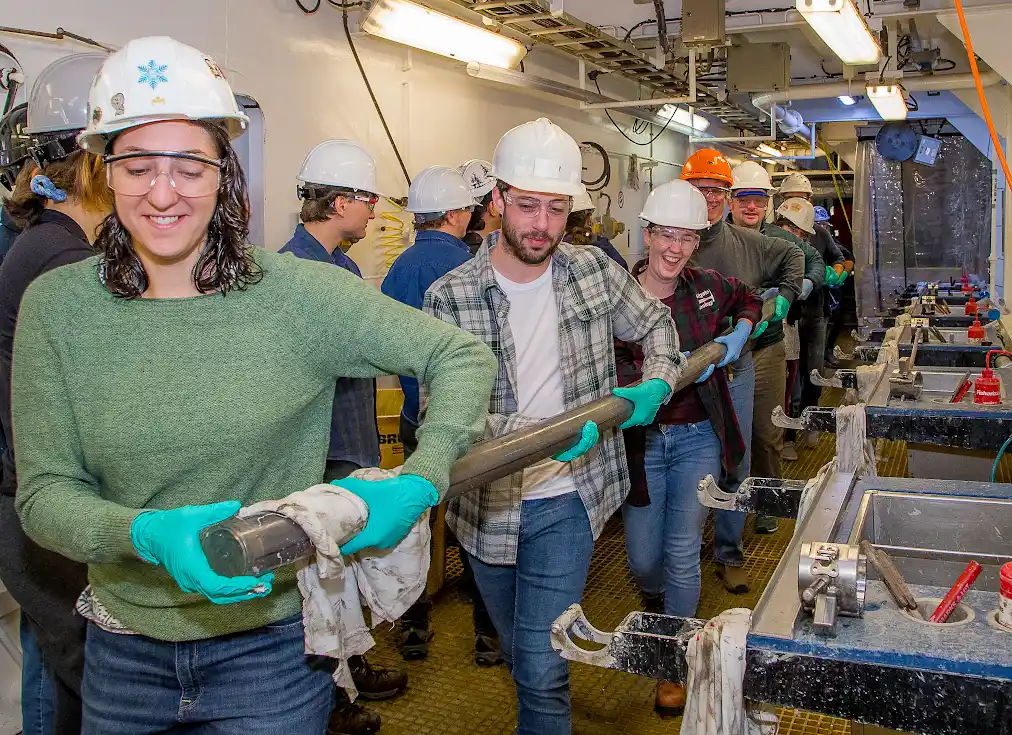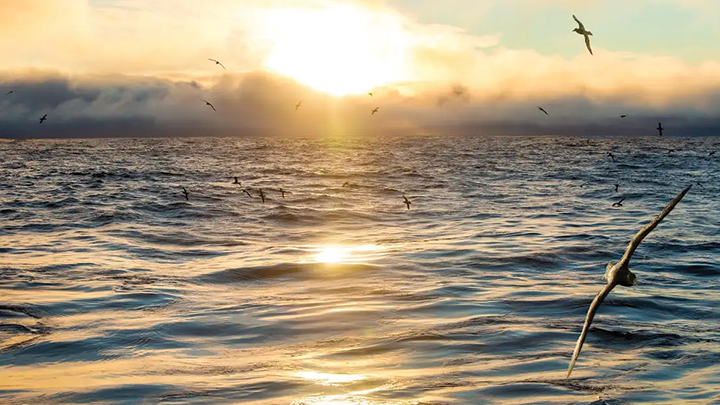This summer, residents of the Southwestern U.S. are feeling the heat. Excessive heat warnings are common, concerns of power outages loom and temperature records have been shattered in multiple regions.
The extreme heat is a product of climate change that doesn’t just impact those on the shore. According to NASA, 90% of global warming is happening in the ocean, which means rising temperatures above the water have rippling effects on the ocean’s ecosystems.
As we close out July and head into August, some of the hottest months on the calendar and California’s peak fire season, we asked paleoceanographer and Assistant Professor of Earth and Environmental Sciences Samantha Bova to break down the science behind the scorching temps, their role in climate change and how they affect sea life.
Can you explain how climate change, and specifically rising temperatures like what we’re experiencing this summer, affect ocean temperatures and marine life?
Oceans have a very high heat capacity, meaning they can absorb a lot of heat from the atmosphere, which prevents the atmosphere from getting even hotter. With anthropogenic climate change increasing temperatures on Earth, the ocean absorbs about 90% of that heat energy, leaving only 10% in the atmosphere.
This is a good thing for us but the ocean taking up heat has a lot of physical impacts on the ocean. The heat causes the ocean to expand in a process called thermal expansion, which contributes to sea level rise. This is compounded by the water being added into the ocean from melting ice and glaciers.
In addition to exchanging heat, the atmosphere and ocean also exchange gasses such as carbon dioxide and oxygen. A large percentage of the carbon dioxide we're putting in the atmosphere is absorbed by the ocean. However, warm oceans can take up less dissolved gasses, which means less oxygen goes into the ocean. There are concerns that this might lead to challenges for ecosystems in regions where oxygen is already low.
What species are especially impacted by warmer oceans?
Coral reefs are a big one — increased ocean temperatures increase heat stress on corals and other organisms such as fish, which have a significant economic value and cultural importance in many regions. Harmful algal blooms are also more likely to occur when you have warmer temperatures.
But you look up and down the food chain and the changes in ocean warming affects everything down to the phytoplankton that, of course, the whole food chain relies on.
Some organisms are able to adapt but not all can. One of the biggest challenges is how quickly the oceans are warming up now, which is unprecedented for millions and millions of years going back into earth history. That does not give organisms time to adapt to the new conditions, which I think is one of the main stresses on them at present.
How do you think the heat we’re experiencing this summer might be affecting San Diego oceans?
So off of San Diego, and off of Southern California in general, we have upwelling, meaning we generally have colder waters coming up from the subsurface and making their way to the surface ocean. And that's controlled by the prevailing winds that come from the northwest and blow along the coast of California, moving water offshore so these cold, deep waters can make it up to the surface. Upwelling is in part why living on the coast here is milder than a lot of other places because it often mitigates hot temperatures. You have all this cold water coming up and the cold water wants to get into equilibrium with the atmosphere it's in contact with, so it takes up heat from the atmosphere and cools things down.
Although the impacts of extreme temperatures on upwelling are still uncertain, some studies suggest they can reduce the amount of cool water we have coming up to the surface. This would not only make waters warmer, but also reduce that kind of natural A/C that we have in this region to help us cool down.
 Open the image full screen.
Open the image full screen.What are some solutions to climate change, specifically where oceans and global warming are concerned?
The largest source of emissions is fossil fuels so we have to make progress there but there are a million additional things we can do.
The ocean is not only a heat sink but a huge sink for carbon as well. So every molecule of carbon dioxide or methane we put in the atmosphere increases the heat trapping capacity of our atmosphere, which leads to more heat going to the ocean, which leads to all the different things I mentioned. It may be possible to increase the ability of the ocean to take up carbon dioxide or heat from the atmosphere, but we have to beware of possible unintended consequences, for example ocean acidification.
On the more local level, we can work within our communities to do smaller scale service projects related to climate justice and climate solutions. In one of my classes, we work with the San Diego Urban Sustainability Coalition (SDUSC) which is focused on environmental and climate justice. In the fall, students in my climate change solutions course will collaborate with them on a project related to developing climate change and climate justice curriculum for primary and secondary students or assist with ongoing work SDUSC is doing in the community, such as planting more trees in southeast San Diego to mitigate the urban heat effect in the area.
Is there one thing you wish people better understood about this issue?
I think a lot of the conversation around this and climate change often gets portrayed, for good reason, as being really negative. Everything's changing, it's scary, terrible extreme events are going to happen. And all that's true. But I think it also leads to people being really disheartened and anxious, and feeling like the problem is too huge that we can't do anything about it. I mean, I get super down about it too. It's a lot.
But every little bit counts. Even small incremental change is still significant. I would like people to know we can make progress even if it feels completely insurmountable. It is possible.
 Open the image full screen.
Open the image full screen.This fall, Bova is teaching Climate Change Solutions (ENV S 302), a general education class with no pre-requisites that outlines ways to mitigate the climate crisis, including methods involving the oceans. She will also teach a class in Paleoceanography (GEOL 600) which covers how the oceans and climate have evolved through Earth history.



